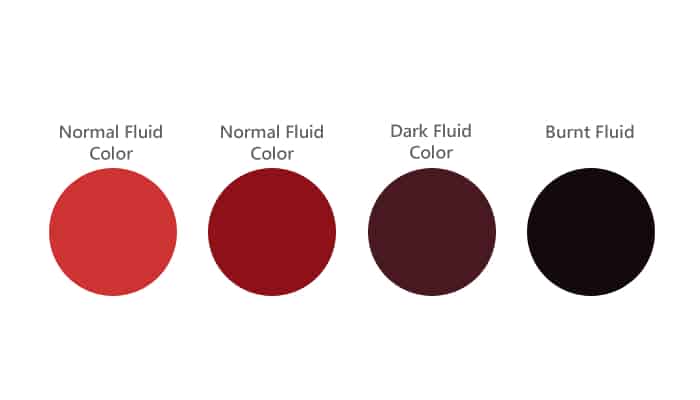Understanding Transmission Fluid for Your Durango
When it comes to keeping your 2002 Dodge Durango running smoothly, one of the most critical components to consider is the transmission fluid. This fluid plays a vital role in ensuring that your vehicle’s transmission operates efficiently, providing the necessary lubrication and cooling to prevent wear and tear. Let’s dive into the specifics of what you need to know about the transmission fluid for your Durango.
Manufacturer’s Recommendations
| Popular posts |
|---|
| What to do to prolong the life of your manual gearbox |
| Automatic transmission: what it is, how it works |
For the 2002 Dodge Durango, the manufacturer recommends using ATF+4 transmission fluid. This specification is crucial because using the wrong type of fluid can lead to significant damage to your transmission. ATF+4 is a synthetic fluid that offers superior performance compared to older fluid types, ensuring better operation under various driving conditions.
Why ATF+4?
Using ATF+4 has several advantages:
- Enhanced lubrication properties that reduce friction and wear.
- Improved thermal stability, which helps maintain performance even in extreme temperatures.
- Compatibility with various seals and gaskets, minimizing the risk of leaks.
- Better resistance to oxidation, which prolongs the life of the fluid.
Fluid Specifications
When selecting transmission fluid for your Durango, it’s essential to ensure that it meets the following specifications:
- Viscosity: The fluid should have a viscosity that aligns with the ATF+4 standard, ensuring optimal flow and protection.
- Color: ATF+4 is typically a red color. If you notice a different color, it may indicate contamination or degradation.
- Performance Level: Ensure that the fluid meets or exceeds the Chrysler MS-9602 specification, which is crucial for the longevity of your transmission.
Where to Find Quality Fluid
You can find ATF+4 transmission fluid at most auto parts stores, dealerships, or online retailers. Always check the label to confirm that it meets the necessary specifications. Avoid generic or off-brand fluids that do not explicitly state compatibility with ATF+4, as they may not provide the protection your transmission needs.
Final Thoughts on Fluid Selection
Choosing the right transmission fluid for your 2002 Dodge Durango is not just a matter of preference; it’s a necessity for maintaining the health of your vehicle. By sticking to the manufacturer’s recommendations and ensuring you use ATF+4, you can help extend the life of your transmission and keep your Durango performing at its best.
Recommended Oil Brands for Your Durango’s Transmission Fluid
When it comes to maintaining your 2002 Dodge Durango, selecting the right transmission fluid is essential. While the manufacturer recommends ATF+4, the market is flooded with various brands that claim to meet or exceed these specifications. Based on feedback from forums and owner experiences, here’s a rundown of some of the most recommended oil brands for your Durango’s transmission fluid.
Top Brands to Consider
After sifting through numerous automotive forums and owner feedback, several brands consistently stand out for their quality and performance. Here’s a list of the most recommended brands:
- Chrysler ATF+4: As the original manufacturer fluid, Chrysler’s own ATF+4 is often regarded as the gold standard. Many owners swear by it, citing smooth shifting and reliable performance.
- Valvoline MaxLife ATF: This fluid is well-known among Durango owners for its compatibility with ATF+4 specifications. Users report excellent performance and a noticeable improvement in shifting quality.
- Mobil 1 Synthetic ATF: Mobil 1 is a trusted name in the automotive industry. Many users have praised its ability to maintain transmission performance, especially in extreme conditions.
- Castrol Transmax ATF: Another popular choice, Castrol’s Transmax line has received positive feedback for its smooth operation and longevity. Owners appreciate its ability to reduce wear and tear on the transmission.
- Royal Purple Max ATF: Known for its high-performance synthetic oils, Royal Purple is a favorite among enthusiasts. Users report enhanced shifting and improved overall transmission responsiveness.
Owner Experiences and Feedback
Many owners have taken to forums to share their experiences with different transmission fluids. Here are some common themes and insights based on their feedback:
- Performance Improvements: Numerous users have reported noticeable improvements in shifting smoothness and responsiveness after switching to high-quality ATF+4 fluids. Many attribute this to the superior lubrication properties of synthetic options.
- Temperature Management: Owners who frequently drive in extreme conditions, such as towing or off-roading, have highlighted the importance of using a fluid that can withstand high temperatures. Brands like Mobil 1 and Royal Purple are often recommended for their thermal stability.
- Longevity and Wear Protection: Many users have expressed satisfaction with the longevity of their transmissions after using reputable brands. They often mention that using quality fluids helps reduce wear on internal components, leading to fewer repairs over time.
- Cost vs. Quality: While some owners opt for cheaper options, many have found that investing in a higher-quality fluid pays off in the long run. Users frequently mention that the initial cost is worth it for the peace of mind and performance benefits.
Common Pitfalls to Avoid
While many brands are praised, some owners have also shared cautionary tales about using lesser-known or generic fluids. Here are a few pitfalls to avoid:
- Using fluids that do not explicitly state compatibility with ATF+4 can lead to transmission issues. Always check the label.
- Some users have reported that off-brand fluids can cause erratic shifting and even transmission damage over time.
- Be wary of fluids that claim to be “universal” without proper certification. These can often fall short of the necessary performance standards.
In summary, choosing the right transmission fluid for your 2002 Dodge Durango can significantly impact its performance and longevity. By considering the experiences of fellow owners and sticking to reputable brands, you can ensure that your vehicle remains in optimal condition.
Change Interval for Your Durango’s Transmission Fluid
Maintaining your 2002 Dodge Durango’s transmission fluid is crucial for ensuring the longevity and performance of your vehicle. One of the most common questions among owners is how often to change the transmission fluid.
Recommended Change Intervals
The general recommendation for changing the transmission fluid in a 2002 Dodge Durango is every 30,000 to 60,000 miles (approximately 48,000 to 96,000 kilometers). However, this can vary based on driving conditions and habits. Here are some factors to consider:
- Normal Driving Conditions: If you primarily drive in moderate conditions, changing the fluid every 60,000 miles is often sufficient.
- Severe Driving Conditions: If you frequently tow heavy loads, drive in stop-and-go traffic, or operate in extreme temperatures, consider changing the fluid every 30,000 miles.
- Manufacturer Guidelines: Always refer to your owner’s manual for specific recommendations, as they provide the most accurate information based on testing and engineering.
Partial Transmission Oil Changes
In many cases, a complete transmission fluid change involves removing the transmission from the vehicle, which can be a labor-intensive and costly process. As a result, many owners opt for partial transmission oil changes, which can be performed more easily and frequently.
Benefits of Partial Changes
Partial transmission fluid changes can provide several benefits:
- Cost-Effective: Partial changes are generally less expensive than full fluid exchanges, making them more accessible for regular maintenance.
- Improved Fluid Quality: Over time, transmission fluid can become contaminated with debris and wear particles. Regular partial changes help maintain fluid quality and performance.
- Ease of Maintenance: Partial changes can often be performed without specialized equipment, allowing for quicker service at home or in a shop.
How Partial Changes Work
Typically, a partial change involves draining a portion of the old fluid and replacing it with fresh fluid. This process can be repeated multiple times to gradually improve the overall quality of the transmission fluid. Here’s how it generally works:
- Drain a specific amount of fluid, usually around 4 to 5 quarts, depending on the transmission system.
- Replace the drained fluid with new ATF+4 fluid.
- Repeat the process every 15,000 to 30,000 miles to ensure that the fluid remains clean and effective.
Statistical Data and Authoritative Sources
According to the American Transmission Rebuilders Association (ATRA), regular maintenance, including fluid changes, can significantly reduce the risk of transmission failure. They report that nearly 90% of transmission failures are due to overheating and fluid contamination, both of which can be mitigated through regular fluid changes.
Additionally, a study by the National Institute for Automotive Service Excellence (ASE) found that vehicles with regularly maintained transmission fluids experience fewer issues and have a longer lifespan. This reinforces the importance of adhering to recommended change intervals, whether through full or partial changes.
In summary, understanding the change interval for your 2002 Dodge Durango’s transmission fluid and the benefits of partial changes can help you maintain your vehicle’s performance and extend its life. Regular maintenance is key to avoiding costly repairs down the road.
What Color Should Transmission Fluid Be?


